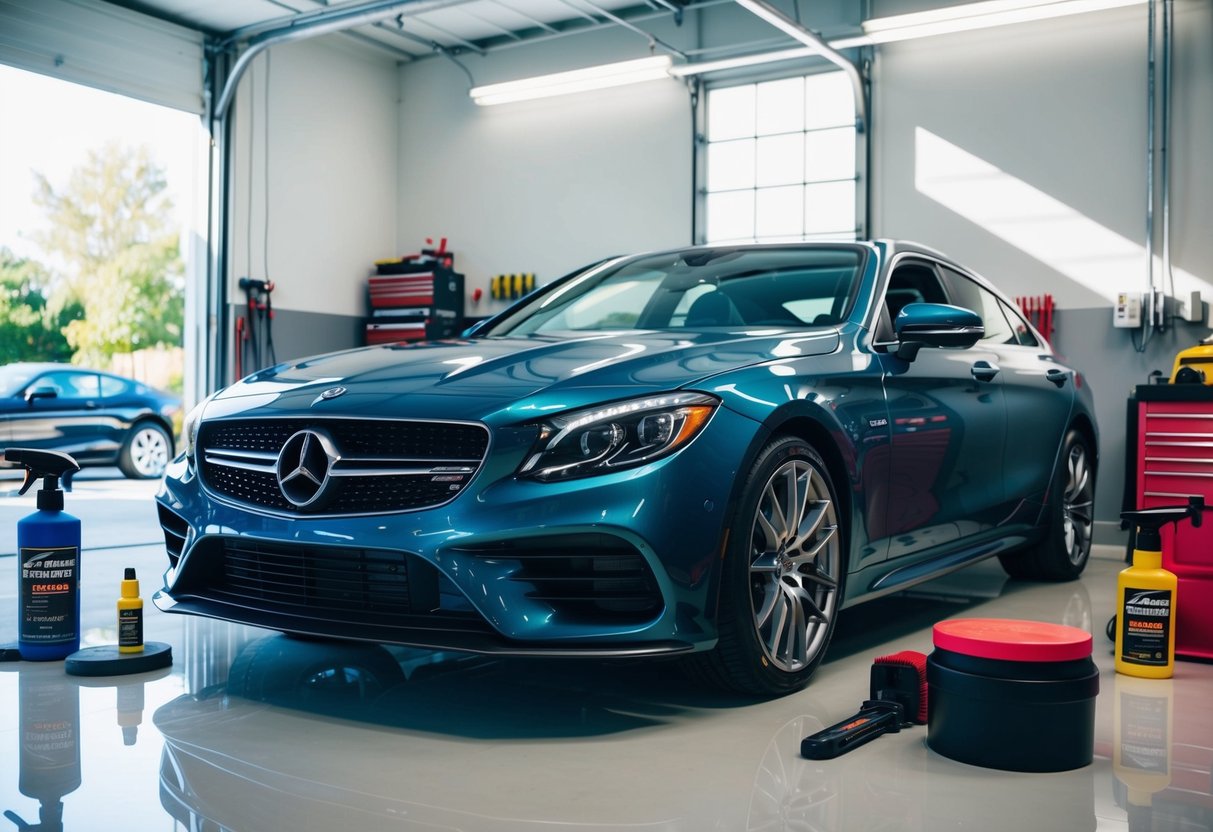
Sealing the Shine

To keep your car looking like it just rolled out of a showroom, sealing the shine is crucial. This step not only enhances the visual appeal but also provides essential protection against environmental elements.
Waxing Basics
Waxing is a foundational step in sealing the shine of a vehicle. Applying a quality car wax forms a protective barrier that shields the paint from UV rays, road grime, and minor scratches. By choosing the right type of wax, such as carnauba or synthetic, one can achieve both a deep gloss and long-lasting protection.
Wax application requires a clean, dry surface. Small, circular motions with an applicator pad ensure even coverage. After allowing the wax to haze, it should be buffed off with a microfiber cloth, revealing a glossy, protective layer. Regular waxing, ideally every three months, maintains the finish and keeps the car looking new.
The Benefits of Ceramic Coatings
Ceramic coatings offer advanced protection compared to traditional waxing. These coatings chemically bond with the car’s paint, creating a durable, hydrophobic layer. This protective layer resists water spots, bird droppings, and chemical contaminants more effectively than wax.
Applying ceramic coatings is more involved than waxing and often requires professional assistance. Surface preparation includes thorough washing, decontamination, and polishing to ensure maximum adhesion. The long-term benefits include reduced maintenance, enhanced gloss, and prolonged paint protection, often lasting several years.
Ceramic coatings provide a significant advantage for those seeking low-maintenance, high-gloss finishes. While the initial investment may be higher, the long-term results and reduced upkeep make it an attractive option for many car owners.
Maintaining the Showroom Shine
Achieving a showroom shine takes ongoing effort and specific techniques. Using proper tools and methods ensures your car remains in top condition.
Routine Car Care Practices
Routine car care involves regular washing to remove dirt and grime that can damage the paint. Use a high-quality car shampoo and avoid household detergents, which can strip the wax and damage the paint finish. Employ the two-bucket method—one for soapy water, one for rinsing the sponge.
A microfiber cloth is essential for drying the car after washing, as it reduces the risk of scratches compared to traditional towels. Monthly waxing helps protect the paint by creating a barrier against environmental contaminants. Tire and wheel cleaning with appropriate products enhances the overall appearance by preventing brake dust buildup.
Advanced Car Care Methods
For advanced care, consider detailing services or perform it yourself with the right tools. Clay bars remove embedded contaminants that washing cannot, leaving the surface smoother. Polishing compounds address minor scratches and restore the paint’s clarity, followed by a sealant to lock in the shine and provide long-lasting protection.
Paint correction involves using a machine polisher to remove deeper imperfections in the paint. This method requires skill and an understanding of the paint’s condition to avoid causing further damage. Interior detailing should not be overlooked, as a clean, well-maintained interior enhances the overall impression and increases comfort.
Employing these advanced techniques ensures a lasting showroom shine, keeping your car looking pristine.